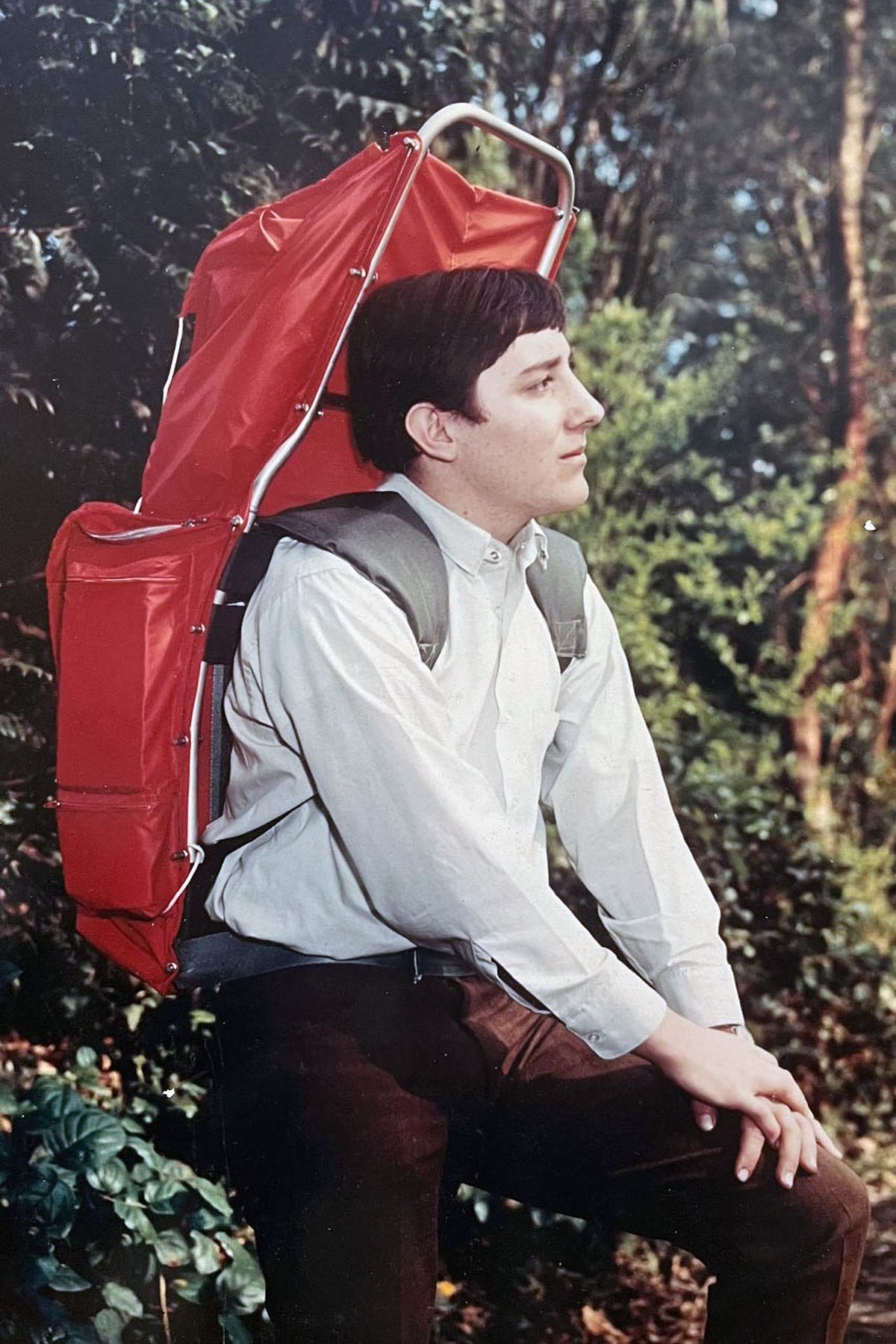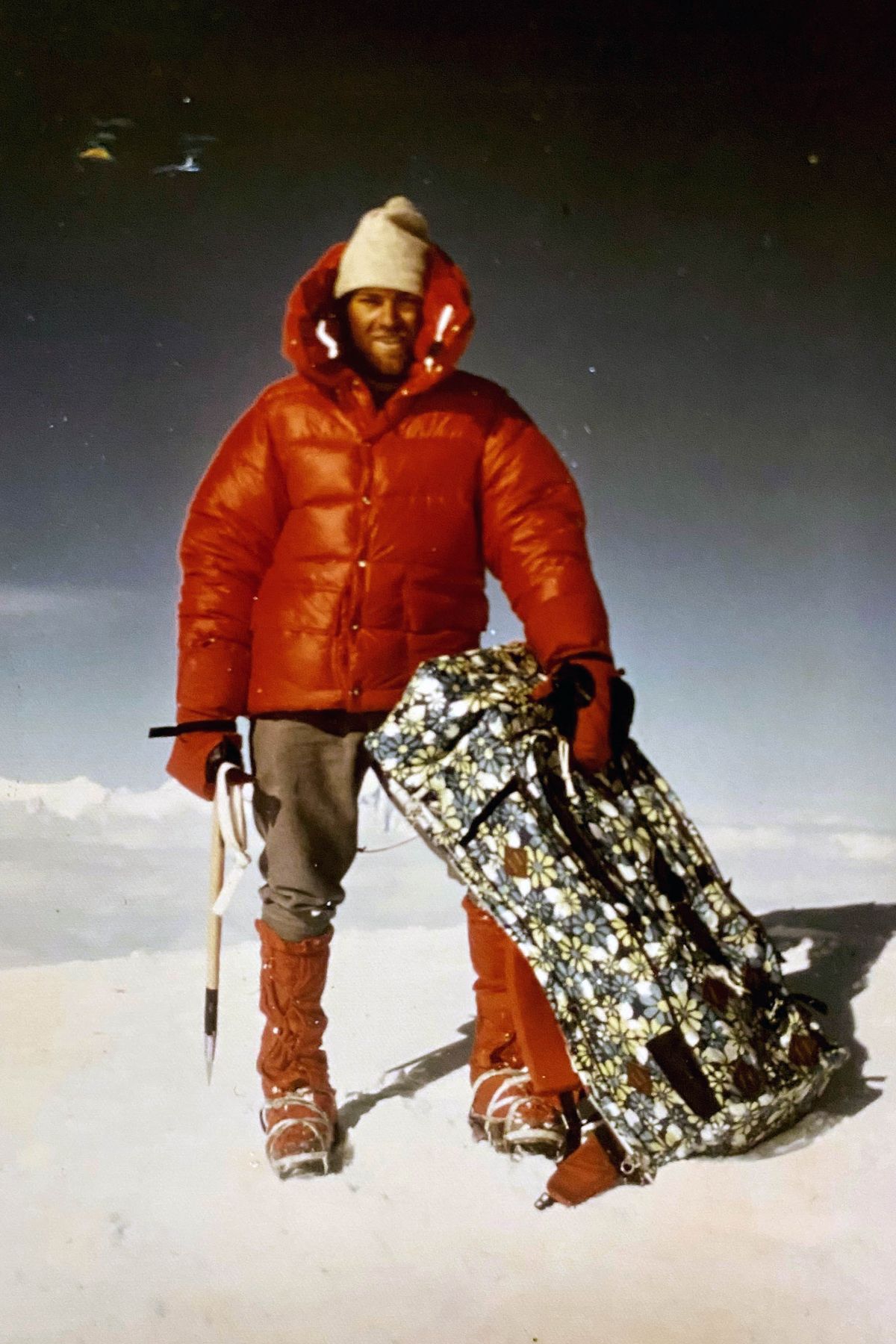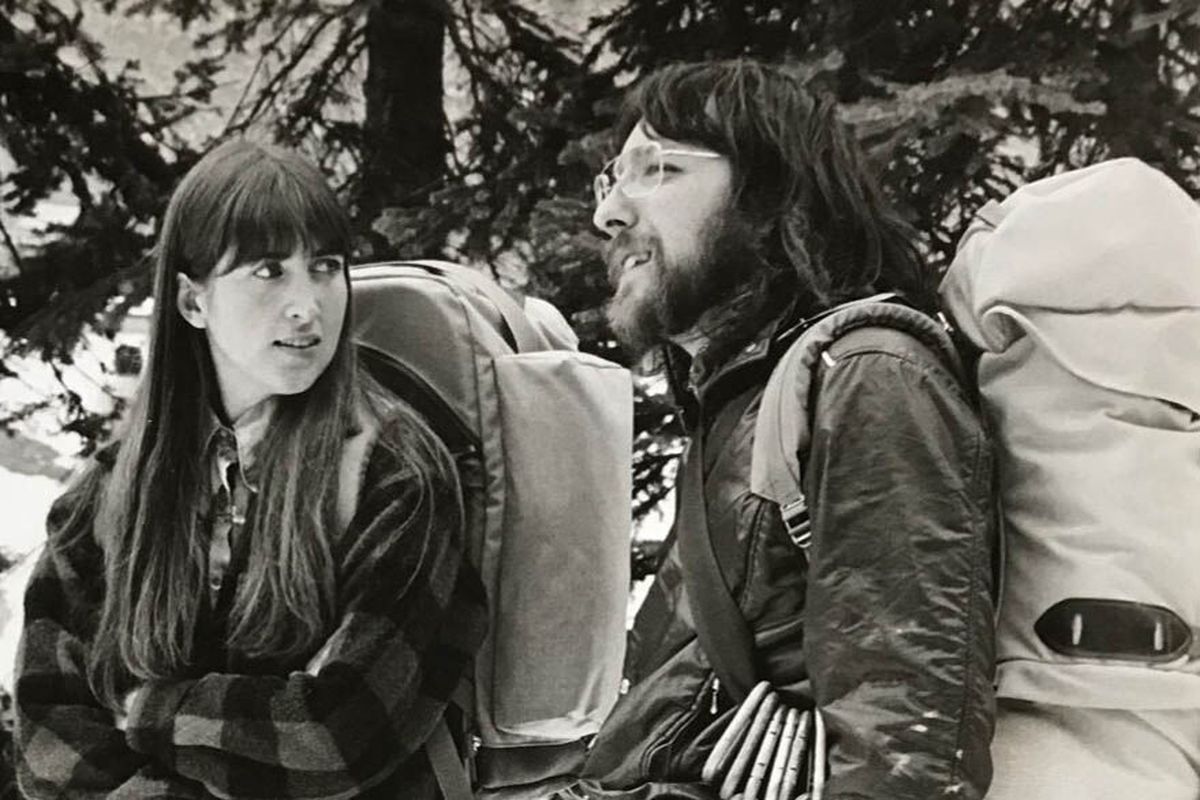Murray McCory, JanSport co-founder and backpack creator, dies at 80
JanSport co-founders Murray McCory and Jan Peterson circa 1968. They married the next year, after meeting as students at the University of Washington in Seattle. (Family Photo)
Murray McCory, a free-spirited outdoorsman who co-founded the rugged gear and pack company JanSport, designed a widely imitated dome tent, and created a durable but lightweight backpack that revolutionized the way students carry books, died Oct. 7 at a hospital in Seattle. He was 80.
The cause was complications from congestive heart failure, said his daughter, Heidi Van Brost.
A Seattle-area native who grew up hiking, camping and tinkering with industrial equipment in his father’s auto shop, McCory was studying at the University of Washington when he entered a 1967 design competition sponsored by the company Alcoa. Tasked with creating a marketable product using aluminum, he came up with an adjustable aluminum-frame backpack with flexible joints, designed to move with the body as a person hiked, crouched or climbed. He won.
McCory’s pack was lighter and more versatile than existing backpacks made with wooden or welded-metal frames. Later that year, he capitalized on news coverage of his design and started Jan Sport out of the top floor of his father’s transmission repair shop.
The company, which later shortened its name to one word, was named after McCory’s co-founder and then-girlfriend, fellow UW student Janis “Jan” Peterson, who had used her mother’s home sewing machine to do the stitching for his award-winning pack.
While still in college, the couple began developing a catalog’s worth of gear, creating sleeping bags, jackets, tents and snowshoes that were inspired by their adventures – and occasional mishaps — in the Cascade Range outside Seattle.
“When we needed something, we made it,” said Peterson, now known as Jan Lewis, who recalled that the duo often put up a sign in their office window: “Closed: In the Mountains Product Testing.”
McCory, who was then known as Murray Pletz, focused on the design side, at times consulting local climbers and guides such as Lou Whittaker, who went on to lead expeditions to the Himalayas. Lewis, whom McCory married in 1969, handled the sewing and selected fabrics, shaping the look of backpacks that were offered in a psychedelic floral pattern or featured a hefty front pocket emblazoned with the Stars and Stripes. McCory’s father pitched in as well, creating tools that JanSport used to manufacture pack frames. By 1970, McCory’s cousin Skip Yowell had also joined the company, developing a focus on sales and marketing.
“There was no business plan,” Yowell recalled in a 2006 memoir, “The Hippie Guide to Climbing the Corporate Ladder & Other Mountains.” “We had no special training. We had even less money. We didn’t even have a store. All we had was Murray’s innovative design, Jan’s skill, my creative instincts and love of people, and a shared affinity for Dylan music and beer.”
The company’s rise coincided with a surge of interest in camping and the outdoors, as families and young people flocked to the woods, rivers and mountains.
But JanSport became better known for its school backpacks than its alpine gear. The company was widely credited with helping bring an end to an era when students would lug their books around in a single-strap satchel or simply carry them by hand, clutching paperbacks or heavy textbooks that were often tied together with a leather belt or loop of fabric.
That handheld method could be especially frustrating in Seattle, where it often rained. So in 1970, while still students, McCory and his wife pitched the University of Washington bookstore on a new “bookstore model” of their nylon daypack.
The bag – which had been designed for hiking, skiing and biking trips but was wide enough to hold books – had nylon zippers, an adjustable waist belt and a large outside pocket for smaller items. Crucially, it also had a reinforced, water-resistant bottom made of vinyl.
The bookstore was thrilled, Lewis recalled in an email, and ran an ad for the bags on the back of local buses. “When we first saw a bus with the ad, Murray and I looked at each other and he said, ‘This is going to be big!’ ”
The store sold more than 400 of the backpacks in the first three months, and in 1971 the packs were brought out for wide release as the University Bookstore Rucksack. Over the next few years, McCory refined the bag further, making the opening wider and adding a leather patch – an aesthetic signature that was initially intended to hold a strapped-on umbrella, raincoat or trekking pole.
McCory’s backpack was released a few years after another lightweight nylon pack designed by the Colorado company Gerry. But the JanSport design became ubiquitous, taking off in college bookstores across the Pacific Northwest before finding a mass market nationwide and inspiring competitors like L.L. Bean to launch lightweight backpacks of their own. Day packs accounted for half of JanSport’s sales in 1985, and by 2015 the company was reportedly selling 8 million backpacks a year.
The oldest of three brothers, Murray John Pletz was born in Shoreline, a Seattle suburb, on July 15, 1944. His mother made oil paintings and watercolors, and his father spent part of his free time building a miniature hydroplane boat that Murray raced on Lake Washington.
McCory traced his love of the outdoors to childhood summers spent at his grandparents’ cabin on Lake Cavanaugh, and to years he spent in the Boy Scouts. By 1970, he was working on JanSport full time, after graduating from the University of Washington with a bachelor’s degree in industrial design.
Starting out, he and his wife also ran an antique business called Pokeweed, which they closed down – keeping the antiques for themselves – as orders grew for JanSport backpacks. The company remained a family business after the birth of their first child, Heidi, who was brought to the office in a travel bed and watched over by McCory’s mother, who did the bookkeeping.
Early advertisements for the company revealed McCory’s cheeky sense of humor. Working with an ad agency, he altered vintage photographs he found in the University of Washington’s archives, according to his daughter, creating images that showed him, his wife and Yowell alongside frontier miners or Alaskan reindeer herders, with JanSport gear in tow. Other catalogue photos showed Mr. McCory’s young children perched atop JanSport backpacks or nestled inside pack pouches.
While the company was initially known for its aluminum-frame backpacks, it found increasing success in the early 1970s after manufacturing a free-standing dome tent. Designed by McCory, the tent was modeled after an igloo and inspired by a cross-country ski trip in which his traditional A-frame tent was ripped apart in a snowstorm. A dome shape, he concluded, was far more likely to survive in those conditions.
“We tested on Rainier in variable 80-mph winds,” McCory told Backpacker magazine in 1973. “A wind tunnel just can’t tell you what your tent will do in a real wind.”
Although dome tents are now a camping staple, the design was never patented by JanSport. The company had been sold in 1972 to the ski manufacturer K2, which didn’t want to pay for a patent, according to McCory’s family. JanSport is now owned by VF, a Denver-based apparel and footwear company that also owns the brands North Face, Timberland and Vans.
McCory’s marriage ended in divorce in 1979. He changed his surname around that time, coming up with McCory because he didn’t like the way Pletz sounded and “was feeling like a change was necessary,” his daughter said. His second marriage, to Becky Morris, also ended in divorce.
In addition to his daughter, Heidi Van Brost, survivors include a son from his first marriage, Jeremy McCory; a stepson, Neal Bishop; and five grandchildren.
McCory left JanSport in the early 1980s, amid an economic downturn, and went on to design outdoor apparel for brands including Helly Hansen, while continuing to hike and ride horses and motorcycles. Tired of the Seattle rain, he moved east of the Cascades to Tonasket, Washington, where he worked as a grant writer and helped secure funding for an Okanogan County rail trail, creating opportunities for biking and hiking along the Similkameen River.
“Throughout his life, he was making sure that this gift of nature was being preserved for the future,” his daughter said.
McCory spent the last 10 years back in Seattle, where he frequented Alki Beach with a camera, taking pictures of sunsets and the sea. Reflecting on the outdoors, he often turned philosophical.
“We and our social equipment seem minuscule in a vast, mysterious environment which extends our limits of understanding and psychological sensitivity,” he wrote in a 1978 JanSport catalogue entry. “The wilderness is a sacred gift which we want to love and protect for all time.”
“With learning,” he added, “the wilderness adventure can be a sensible experience that will allow your free spirit to soar.”


